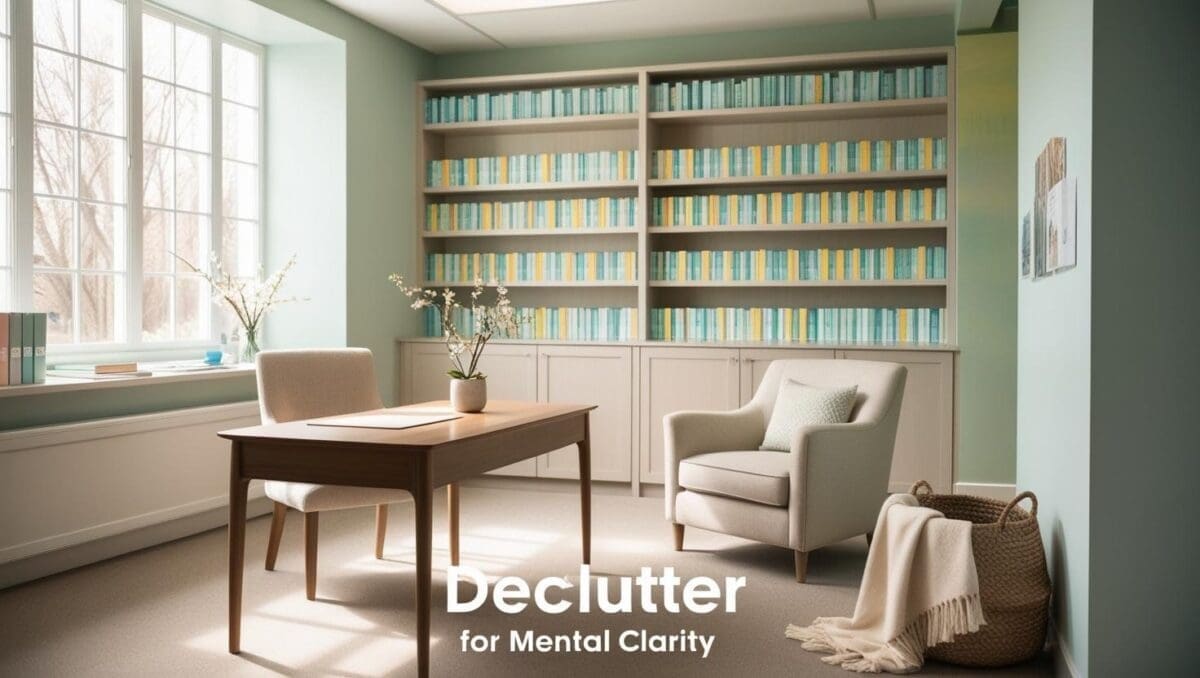The Role of Lighting in a Minimalist Therapy Office
Lighting isn’t just a design choice—it’s a powerful emotional tool. In therapy offices, the right glow can create a calm, welcoming space that helps clients feel safe before the session even begins. A harsh ceiling light might increase anxiety, while soft ambient lighting offers comfort and groundedness.
As a counselor, I’ve learned that lighting affects not only how a room looks—but how it feels. This guide will show you minimalist lighting solutions that support therapeutic goals without clutter or distraction. Let’s explore simple, beautiful ways to enhance your space with light.
This guide explores the best minimalist lighting solutions for therapy offices, including natural light strategies, cordless lamp options, and calming color temperatures to help you create an atmosphere that supports deep conversations and emotional well-being.
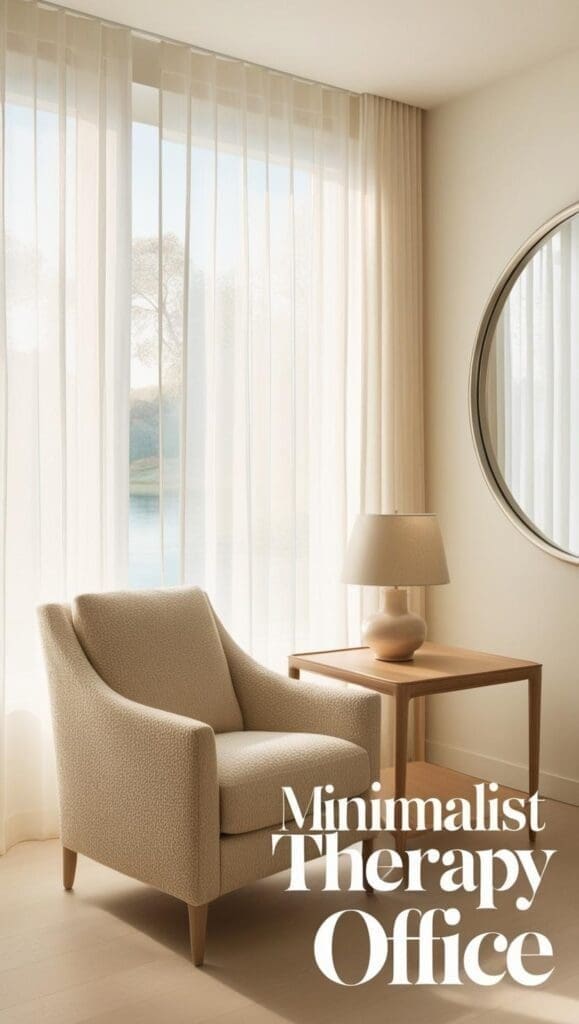
1. Natural Light: The Best Free Lighting Solution
Nothing beats the warmth and clarity of natural light in a therapy office. Exposure to natural light is scientifically proven to reduce stress, boost mood, and enhance focus—all essential elements in a therapy setting.
How to Maximize Natural Light in a Minimalist Therapy Office:
✔ Use Sheer Curtains – Allows sunlight to filter through while maintaining privacy.
✔ Position Seating Near Windows – Helps clients feel more at ease with a natural light source.
✔ Opt for Light-Colored Walls – Reflects natural light, making the room feel brighter and more open.
✔ Use Mirrors Strategically – A large mirror opposite a window amplifies natural brightness.
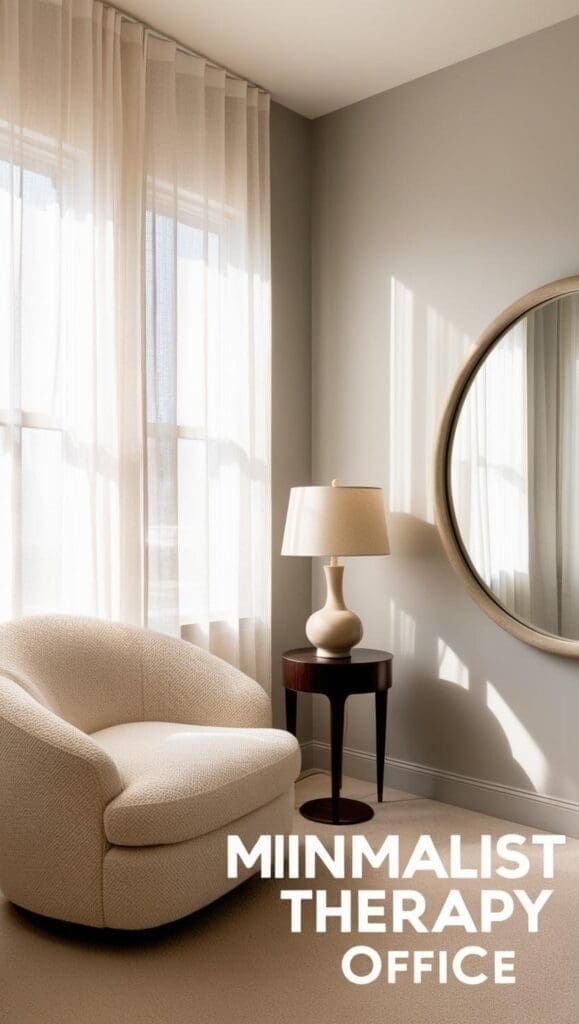
2. Warm vs. Cool Lighting: Choosing the Right Color Temperature
The color temperature of your lighting significantly impacts the mood and energy of a therapy office. Cool lighting (bright white or blue-toned) tends to feel clinical, while warm lighting (soft yellow or amber-toned) creates a sense of comfort and relaxation.
Best Color Temperatures for a Minimalist Therapy Office:
✔ Soft White (2700K – 3000K) – A warm, inviting glow perfect for therapy spaces.
✔ Warm White (3000K – 3500K) – Bright enough for focus but still cozy.
✔ Avoid Cool White & Daylight (4000K – 6000K) – Can feel too stark and uninviting.
💡 Image Prompt for This Section:
A minimalist therapy office featuring warm, ambient lighting. A soft-glowing table lamp with an amber-toned bulb sits on a floating wooden shelf, casting a gentle glow. The walls are painted in a light taupe shade, complementing the cozy, peaceful atmosphere of the room.
3. Cordless & Rechargeable Lamps for a Clutter-Free Look
Minimalist therapy offices thrive on clean, clutter-free surfaces. Cordless and rechargeable lamps offer the perfect balance of flexibility, functionality, and aesthetic appeal without messy cords disrupting the serene environment.
Cordless lamps are perfect for therapy offices where outlet access is limited—or when you simply want to eliminate visual clutter from cords.
Why it works: They provide flexibility in placement, can be moved around easily, and often offer touch controls or rechargeable bases for convenience.
How to apply it: Add a cordless lamp to a bookshelf, side table, or wall shelf for soft accent lighting. Many models come with warm-toned bulbs and modern minimalist silhouettes that blend effortlessly into your decor.
Related: No Wiring, No Problem: Cordless Lamps for Therapy Offices
Benefits of Cordless Lighting in Therapy Offices:
✔ No Visible Cords – Creates a sleek and seamless look.
✔ Rechargeable & Portable – Can be moved easily to different seating areas.
✔ Adjustable Brightness Settings – Allows for dimmable, customized lighting.
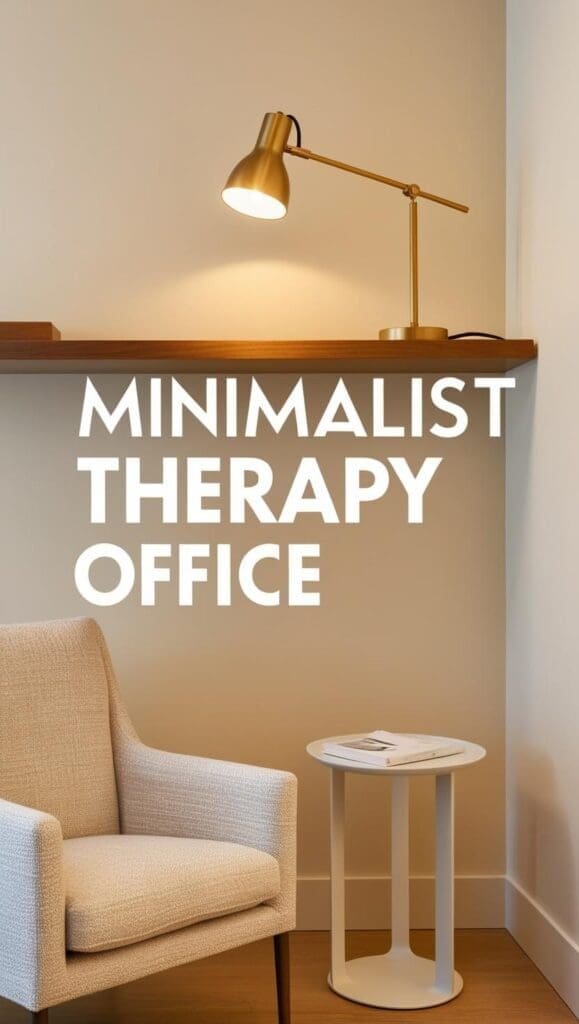
4. Layered Lighting: Combining Different Light Sources
A well-lit minimalist therapy office doesn’t rely on just one light source—it incorporates multiple layers of lighting to create depth and flexibility.
Three Layers of Minimalist Lighting:
✔ Ambient Lighting (Main Source) – Soft, overhead lighting or recessed ceiling lights.
✔ Task Lighting (Focused Areas) – A small, dimmable lamp for reading or note-taking.
✔ Accent Lighting (Mood Enhancers) – Wall sconces or soft-glow table lamps to create ambiance.
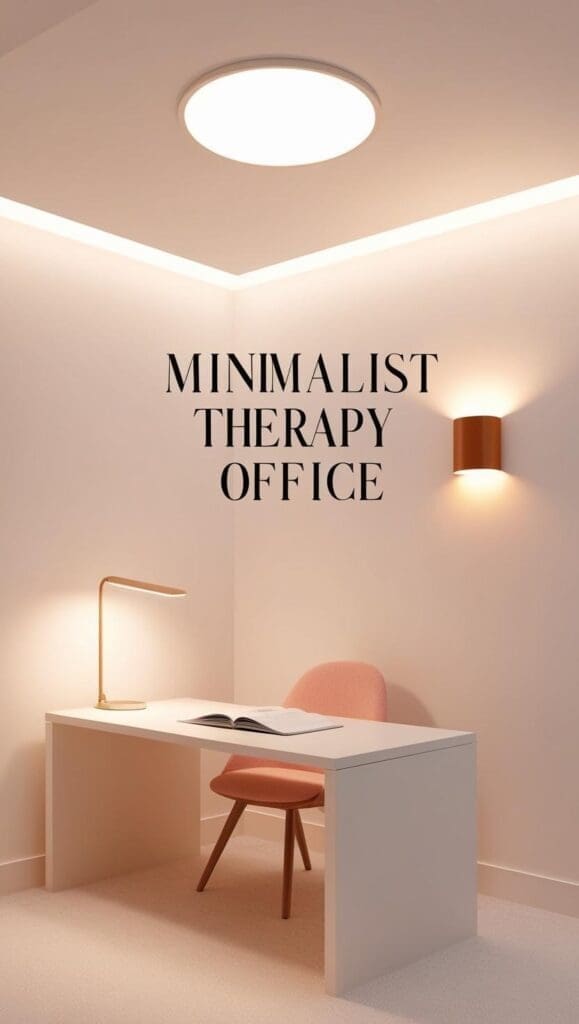
5. Statement Lighting Pieces That Keep a Minimalist Look
Minimalist therapy offices don’t need excessive decor, but a single, thoughtfully chosen statement light fixture can elevate the entire space.
Minimalist Lighting Fixtures for Therapy Offices:
✔ Sleek Pendant Lights – Perfect for a modern, elegant touch.
✔ Simple Wall Sconces – Space-saving and subtle yet effective.
✔ Slim Floor Lamps with Soft Glow – Provides height and depth without bulk.
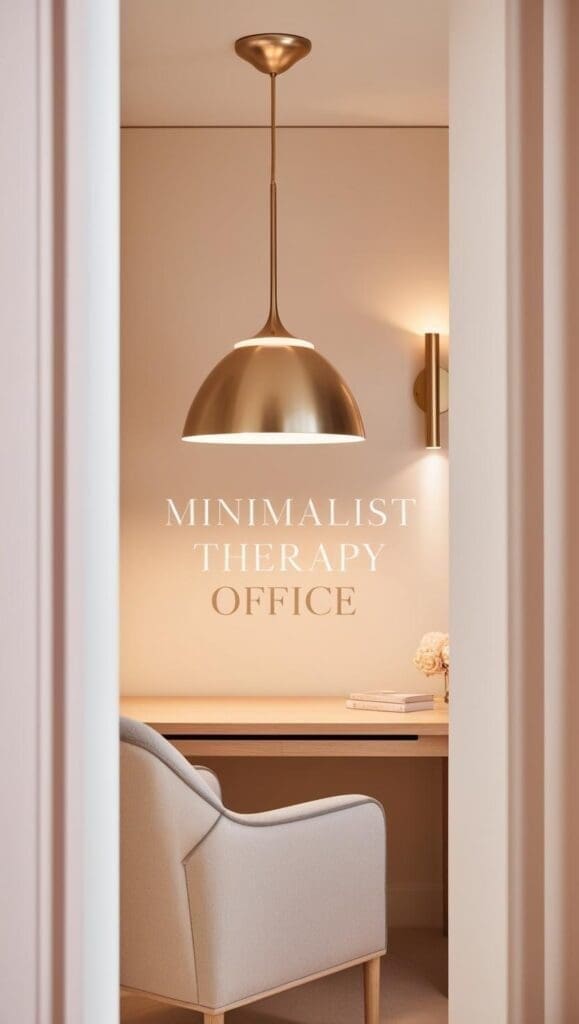
Why Lighting Matters in a Minimalist Therapy Office
Lighting isn’t just about illumination—it’s about creating the right atmosphere for therapy sessions. A well-designed minimalist therapy office incorporates natural light, warm-toned bulbs, cordless lamps, and layered lighting to ensure a calm, inviting, and professional space.
Minimalist lighting isn’t about using less—it’s about using light more intentionally. The right fixtures can support calm, connection, and therapeutic presence.
By layering soft ambient light with focused functional fixtures and integrating natural light when possible, you can design a space that holds emotional clarity for everyone who enters.
Explore more calming office inspiration:
- Minimalist Therapy Office Essentials
- Dark Aesthetic Therapy Office Wallpaper Ideas
- Best Therapy Desks
- The Psychology of Minimalist Design
Affiliate Disclosure: This post may contain affiliate links. I only recommend lighting and decor that I believe support therapeutic spaces. If you purchase through a link, I may earn a small commission at no cost to you.
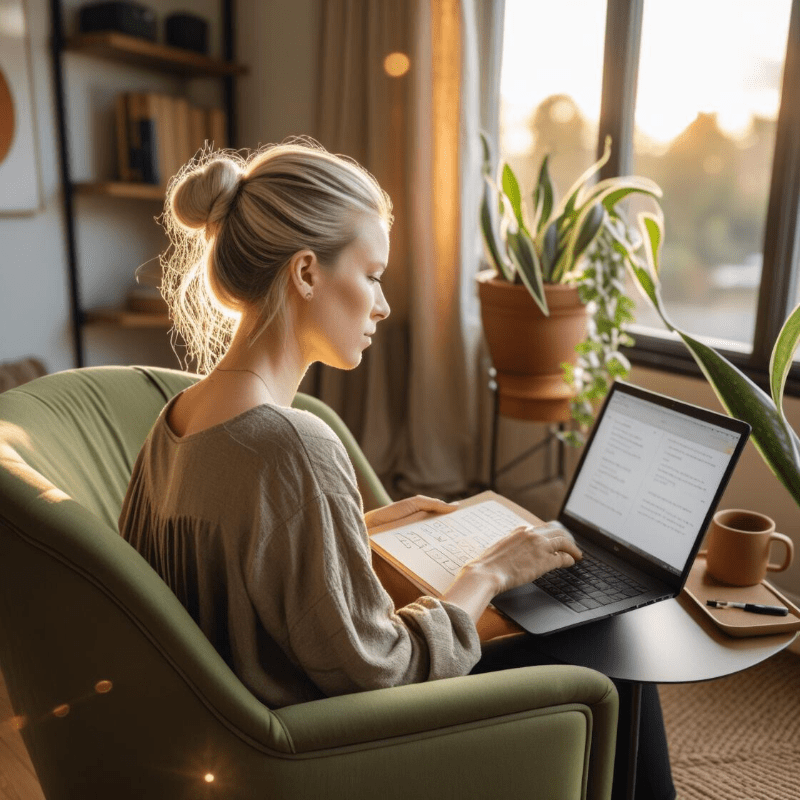
About the Author
Hi, I’m Eve, a former school counselor with a master’s degree in School Psychology and a passionate advocate for children and families navigating sensory challenges. As a mom of children with sensory sensitivities, I deeply understand the journey special-needs parents face, and I dedicate myself to researching and sharing practical solutions to help children thrive and feel comfortable in their bodies. My goal is also to empower counselors, therapists, and psychologists with creative strategies and supportive resources to enrich their everyday practice. When I’m not writing or exploring new therapeutic approaches, you’ll find me spending quality time with my family and continually seeking inspiration from everyday moments.

